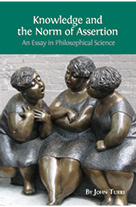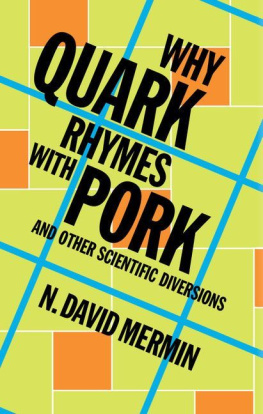First published in 1929
by George Routledge & Sons Ltd.
This edition first published in 2021 by Routledge
2 Park Square, Milton Park, Abingdon, Oxon OX14 4RN
and by Routledge
605 Third Avenue, New York, NY 10017
Routledge is an imprint of the Taylor & Francis Group, an informa business
1929 D. F. Fraser-Harris
Publishers Note
The publisher has gone to great lengths to ensure the quality of this reprint but points out that some imperfections in the original copies may be apparent.
Disclaimer
The publisher has made every effort to trace copyright holders and welcomes correspondence from those they have been unable to contact.
ISBN: 978-1-032-01179-0 (hbk)
ISBN: 978-1-003-17763-0 (ebk)
ISBN: 978-1-032-01191-2 (pbk)
PREFACE
SOME of the essays included in this volume have already appeared either on this or the other side of the Atlantic.
It is a pleasure to thank the Editor of The Cornhill Magazine for permission to republish the article dealing with Plague and the Litany; and the Editor of Chambers Journal for his kindness in allowing me to print again the articles on Suspended Animation and on Blaming the Air, I have also to express my indebtedness to the Editor of Nature for granting me permission to use the article on Physiology and Vital Force which was published in that journal in April, 1925; and to the Editor of Discovery for allowing me to reprint the articles on Animal Electricity and Animal Heat which appeared in Discovery.
Through the kindness of the Editor of The Birmingham Mail, I am enabled to reprint the article on What the microscope has achieved for mankind, which was originally published in the Mail in November, 1927. The essay on Lost Arts first appeared in 1925 in the July number of the Dalhousie Review, and I have to thank my former colleague, Professor H. L. Stewart, the Editor, for his courtesy in enabling it to reappear as a chapter of this book.
D. F. F.-H.
CHISWICK.
January, 1929.
A PHENOMENON is called rhythmic when it recurs at equal intervals of time, or, at any rate, not at cognisably unequal ones. The dripping of water from a leaky tap is rhythmic, but the noise of a tray falling downstairs is not. The universe is full of rhythms. The succession of the seasons, the alternation of day and night, the phases of the moon, the ebb and flow of the tide, the recurrence of spring and neap tides, the November flight of meteors, the yearly rise of the Nile, and so forth are all examples of cosmic rhythms. The precise magnitude of the time-interval is of no consequence, for in the case of waves of light the interval may be only some millionths of a second, whereas the return of a comet, such as Halleys, to our solar system, may be a matter of seventy years or so. The vibrations of the ether and the behaviour of the comet are both rhythmical or periodic.
Music is essentially rhythmic; in fact, it is the periodic character of the vibrations of the air that constitutes music as distinguished from noise. The vibrations of the air objectively constituting noise are highly irregular or arhythmic.
A clap of thunder is not rhythmical. In a rhythm something occurs at equal intervals of time; if this something recurs at unequal intervals, the rhythm sometimes is spoken of as irregular. The ordinary usage is to make the word rhythm synonymous with regular rhythm, the only sense in which the term will be employed in what follows. It is owing to the regularity of recurrence of eclipses, the equinox, meteors, comets, etc., that these phenomena can be predicted with an accuracy that makes astronomy as an exact science so justly admired. The periodicities of rhythms in the non-living world may be matters of years, months, weeks, days, hours, minutes, seconds or fractions of a second.
Coming now to the realm of life, we find rhythms pervading everything. The plants, with striking regularity, have their own times each year for putting forth the buds, unfolding the leaves, bursting into flower, and finally, allowing all the perfumed beauty of the corollas to fade in order that the fruit shall be formed as a life in death. Thus the poetess sang
Leaves have their times to fall, And flowers to wither at the north winds breath; Thou hast all seasons for thine own, O Death.
In plain prose, there is no rhythm about death.
Chestnut Sunday is approximately the same Sunday, and Apple Blossom week is as near as may be the same week, each year.
If one lives in the country one is able to watch the unerring precision with which each kind of tree puts forth its blossom. The wild plum or sloe is one of the earliest, then comes the pear, then the cherry, then the apple, and so on. Each has its own week for the annual exhibition of virginal loveliness.
The opening and closing of flowers is rhythmic, the rhythm depending on the waxing and waning of the intensity of day-light.
Doubtless the most familiar rhythms are met with in the world of animal life. Here we have the striking rhythmic actions of animals as in flocks and herds, of animals as individuals, and of the organs, tissues and cells of the animal body. The migration of birds is annual in rhythm. It is only part of the truth to say that the waning light and diminished heat and food are what constrain the birds to leave us; they know when to leave us. Migratory birds which have spent all their lives well-fed in the captivity of Regents Park, nevertheless become restless at the approach of autumn. Again, those animals which hibernate during the winter know when to betake themselves to their hiding places, whence they come not forth until the spring. The cuckoo returns almost on the same day every year.
The rhythm of the sexual activities of birds is one of the most characteristic things about their behaviour. It is only in the spring that the livelier iris changes on the burnishd dove, but it is every spring. Even a decerebrated male pigeon will coo energetically at the breeding season, although if the hen bird be placed near him he will take no notice of her. The sexual rhythm is inherent in the nervous system, but in the absence of the brain it is a meaningless and mechanical rhythm.
Only those who have lived much in the country have any adequate notion of the reality of these biological rhythms.









